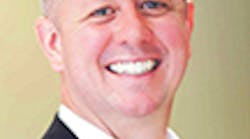Rob Ziliak, CFP
You know what the cost will be for nearly everything you spend money on, correct? A new patient chair will cost about $5,000. A used CEREC Omnicam can be found for roughly $60,000. Total expenses for your college-bound child’s education will run, say, $30,000 this coming year. That perfect new home can be had for $800,000. The family vacation this summer will add up to $10,000.
Until we know the cost of making nearly any purchase, whether it’s expensive or inexpensive, we’re unlikely to spend the money. That’s just basic financial common sense, instilled in us as children.
When we want something, we’ve learned to investigate how much it costs and then to save toward that number. This essential process, which is necessary for many reasons, is fundamentally the same when it comes to retirement. With retirement, however, the stakes are generally much higher than having to postpone an equipment purchase for another year or settling on a vacation. Saving too little can result in a prolonged working career, greater risk of disability, higher taxes, and significant risk of having to reduce your lifestyle in retirement. Saving more than you need right now is actually better than saving too little, yet it can create substantial stress on funding your desired lifestyle while owning a practice and raising a family. Additionally, saving everything for the future has risks, too—we’re not guaranteed to live a long, healthy life, so there’s something to be said for enjoying fully every year that we have.
So why do so few dentists, or Americans in general, for that matter, have an answer to the question, “How much will it cost to live in retirement?” After all, the amount of money we spend throughout our retirement years will likely exceed any other expenditure in our lifetimes, and, in some cases, by multiples. Knowing how much retirement will cost is what helps us determine how much to save every year. A brief case study can illustrate this point.
Dr. Sue transitions out of her practice fully at 65 and her husband, Jake, retires from his job at the same age. They have no idea if they were financially prepared to retire, yet are both emotionally and physically ready to move into a new chapter of their lives. They feel that $2 million should be enough to sustain them and their accustomed lifestyle. However, with both in good health and longevity running in their families, they each lived to 90.
But if Dr. Sue and her husband had spent an average of $120,000 per year over their 25 years of retirement, which would have maintained their lifestyle, their total cost of retirement would have been $3 million, not $2 million.
It’s important to notice how this example moved from the present into the past, particularly in regard to the calculations concerning how much it cost Sue and Jake to have lived for 25 years into retirement. When it comes to planning for our years without income, we don’t have the benefit of knowing the final cost before agreeing to spend the money. Before retirement, Sue and Jake spent $500,000 on their home, which was at that point the largest expenditure they had ever made. Before purchasing the house, they knew an assessed value, an appraised value, and the annual property tax obligation. They had it inspected for quality and paid to have it insured going forward. Why is it that they would head into retirement, preparing to spend six times more than they did on their now second-biggest expense, with no clue about how much it would cost?
Dentists are asked to provide numbers about retirement to at least a few financial planning partners every year. The CPA asks, “How much are you going to save in your retirement plan? I can’t complete your tax projections or returns until I know that number.” The 401(k) record-keeper asks, “How much are you going to save in your retirement plan? I can’t complete your Form 5500 or summary plan description until I know that number.” The investment advisor asks, “How much are you going to save in your retirement plan? I can’t rebalance your portfolio or identify the right investment allocation until I know that number.” Dentists will too often provide these advisors with whatever amount of money they happen to be able to combine from their corporate and personal checking accounts, ranging from a very small to a very large figure. Emotion, or possibly even a guess, is often included in their answer. Quite frequently, the funding amount is arbitrary. If questioned, the investment advisor may tell the dentist to ask the accountant or record-keeper how much he or she should save. The record-keeper may provide a range somewhere between the minimum amount the dentist must contribute that year and the maximum amount allowable, leaving the dentist to choose anything (again, perhaps arbitrarily) in that window. The accountant will likely pick the maximum number deductible on the dentist’s tax return.
The record-keeper may provide a range somewhere between the minimum amount the dentist must contribute that year and the maximum amount allowable, leaving the dentist to choose anything (again, perhaps arbitrarily) in that window.
A wonderful—yet rarely uttered—response from the dentist would be to ask each of their respective advisors, “How much do I need to save? Until I know that number, I won’t write the check.” Every dentist should know how much they need to save for the retirement they envision, either because they rely on a fiduciary financial advisor to help equip them with that number or because they’ve performed their own projections.
Fortunately, Monte Carlo simulations offer a measurable way to answer questions about how much a dentist should save toward retirement, and that savings number should be reevaluated every 12 to 24 months. Like with any statistical measure, though, a Monte Carlo simulation’s output is only as valuable as the quality of the inputs, so not all simulations or simulators are created equally.
It’s necessary to evaluate current and future spending levels, along with current assets, taxes, time horizon, and expected investment returns, to anticipate whether the dentist is saving enough annually. Levels of insurance need consideration as well. Refreshing the data used, plus incorporating changes to practice or family circumstances and future goals, are relevant for ongoing retirement projections, whether the dentist is in the early, middle, or final stages of a career. As a side note, conducting retirement projections does not end at the sale of a practice or the close of a working career. Retirees still need regularly updated retirement projections, as well as analysis to gauge how lifestyle spending and investments have performed relative to what initially was planned.
Upon completion of a customized, goals-based retirement projection, the dentist is now fully equipped to understand the cost of retirement, which means that the dentist also knows the amount necessary to save each year. The benefits will be evident through a measured increase in net worth over time, and also through the emotional peace of mind that comes with a strategic plan quantifiably measuring and balancing the wants and needs of today with the wants and needs of the future.
The next time one of your advisors or financial planning partners asks you how much you’re going to save into your retirement plan, look at the retirement projection and provide the number. Then check on your next hygiene patient or head to the golf course.
Rob Ziliak, CFP, is an advisory team director at Buckingham Strategic Wealth, a comprehensive wealth management firm with a niche practice area that focuses on financial solutions for dentists and their families. Through a holistic, evidence-based approach to strategic planning, Buckingham helps dentists connect their finances with their values to realize their most important goals. To learn more, please visit buckinghamadvisor.com or contact Buckingham at (888) 470-3064.







